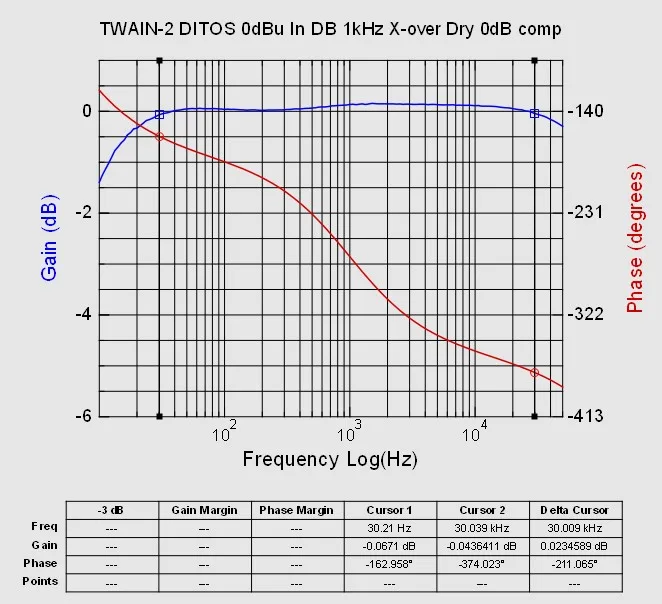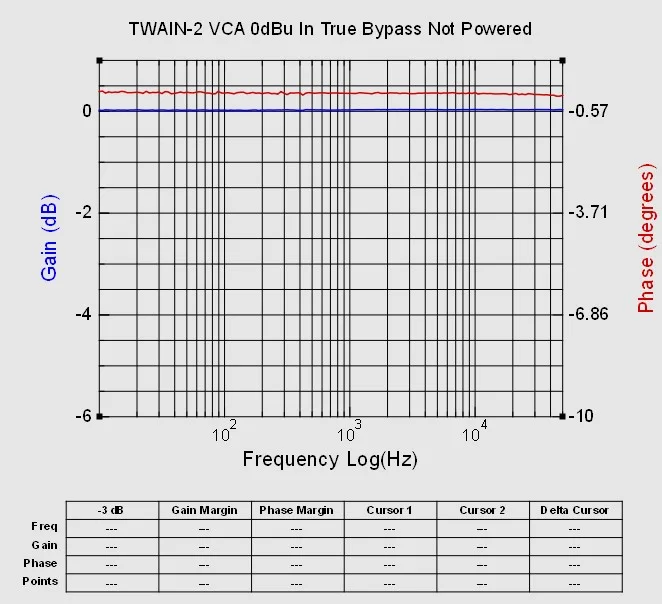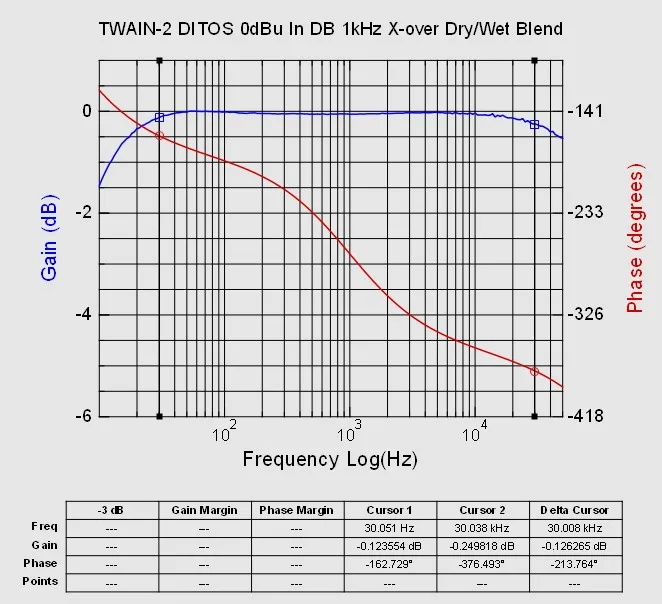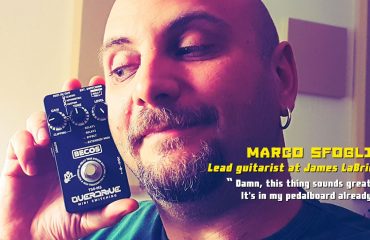BECOS FX CompIQ Twain Pro Compressor MK2 – Frequency Response Analysis
The measurements were taken using FRA4PicoScope 64-bit software with a PicoScope 2204A oscilloscope and its synchronized signal generator, a 0dBu (2.19Vp-p) input signal positioned between instrument-level dynamics and near pro line level, and a 9VDC power supply. The CompIQ Twain Dual-Band / Stacked Pro Compressor MK2 controls were set to balance input and output levels across the Dry and Wet lines in Dual-Band processing mode, covering both Effect and Bypass. The DITOS active transformer DI follows the VCA output in series, as if using two consecutive pedals. While the VCA output can be truly bypassed, the following DITOS stage is active, so the VCA’s signal, whether effect or bypassed, always routes through the DITOS transformer. Each output was connected to a high-impedance load during measurement.
VCA OUTPUT
DITOS TRANSFORMER OUTPUT
Note 1: While powered and in true bypass, the VCA output has the DITOS active DI as a connected load, causing a slight phase bend averaging a mere 1.3° around 10kHz and above, with no frequency loss or any audible effect. When unpowered, the VCA true bypass routes the signal directly from input to output, and with DITOS inactive, there’s no load to touch the phase at the top end, maintaining zero frequency loss.
Note 2: The Dry line shows a very subtle bump of less than 0.2dB above 1kHz, likely from FET conditioning or parts tolerance. Though complimentary, it’s inaudible in practice. DITOS pass-through provides ultra-transparent transformer processing, aided by high-performance line drivers, while musical content gains subtle coloration from the audio transformer without distortion. On the Wet line, de-balancing bands can act like a tilting EQ around the crossover frequency, achieving a linear 30Hz–30kHz response when both bands are balanced. Blending Wet and Dry lines yields a nearly linear spectrum with a 0.1dB average variation.












